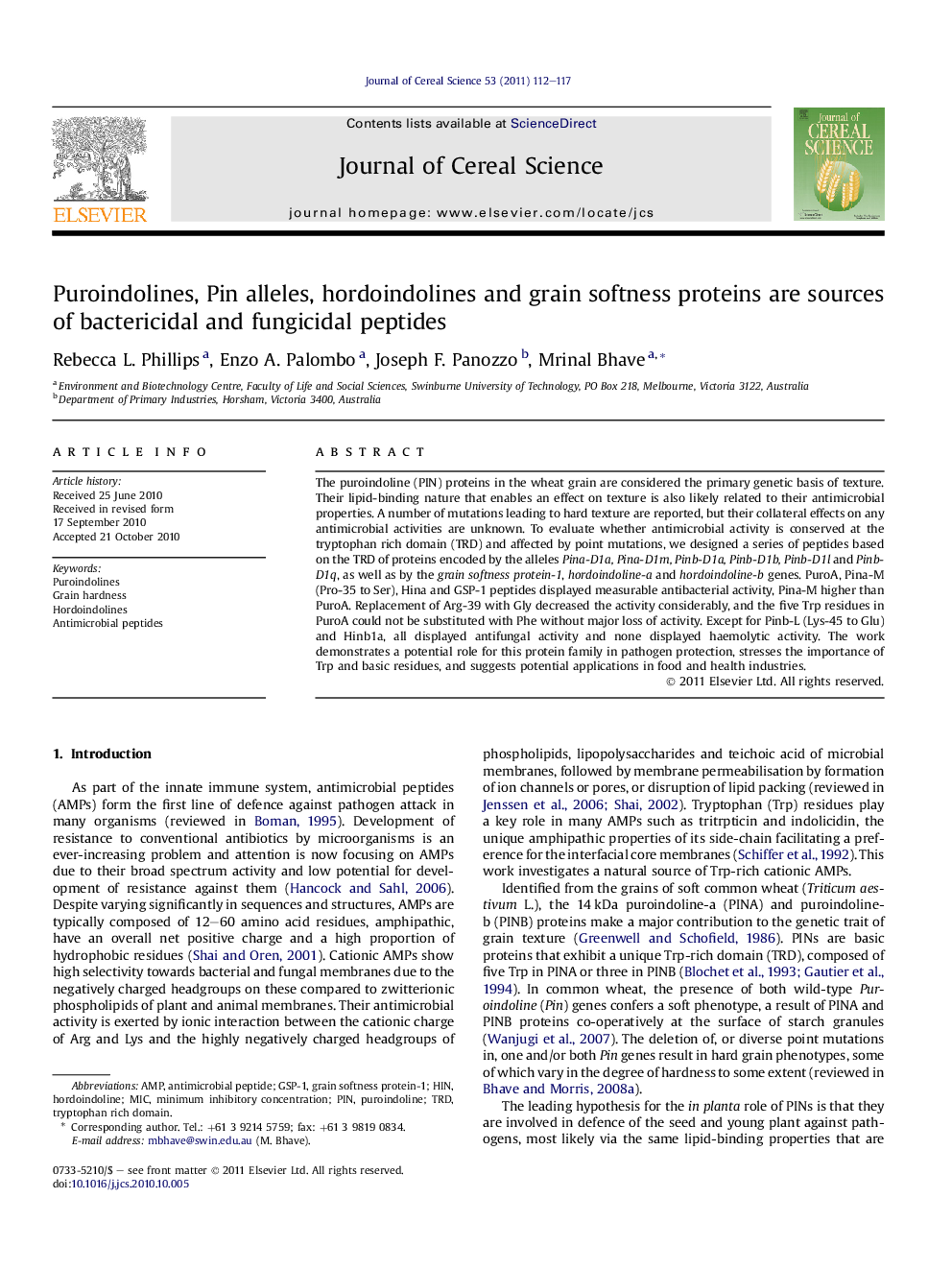| Article ID | Journal | Published Year | Pages | File Type |
|---|---|---|---|---|
| 6378204 | Journal of Cereal Science | 2011 | 6 Pages |
Abstract
The puroindoline (PIN) proteins in the wheat grain are considered the primary genetic basis of texture. Their lipid-binding nature that enables an effect on texture is also likely related to their antimicrobial properties. A number of mutations leading to hard texture are reported, but their collateral effects on any antimicrobial activities are unknown. To evaluate whether antimicrobial activity is conserved at the tryptophan rich domain (TRD) and affected by point mutations, we designed a series of peptides based on the TRD of proteins encoded by the alleles Pina-D1a, Pina-D1m, Pinb-D1a, Pinb-D1b, Pinb-D1l and Pinb-D1q, as well as by the grain softness protein-1, hordoindoline-a and hordoindoline-b genes. PuroA, Pina-M (Pro-35 to Ser), Hina and GSP-1 peptides displayed measurable antibacterial activity, Pina-M higher than PuroA. Replacement of Arg-39 with Gly decreased the activity considerably, and the five Trp residues in PuroA could not be substituted with Phe without major loss of activity. Except for Pinb-L (Lys-45 to Glu) and Hinb1a, all displayed antifungal activity and none displayed haemolytic activity. The work demonstrates a potential role for this protein family in pathogen protection, stresses the importance of Trp and basic residues, and suggests potential applications in food and health industries.
Keywords
Related Topics
Life Sciences
Agricultural and Biological Sciences
Agronomy and Crop Science
Authors
Rebecca L. Phillips, Enzo A. Palombo, Joseph F. Panozzo, Mrinal Bhave,
